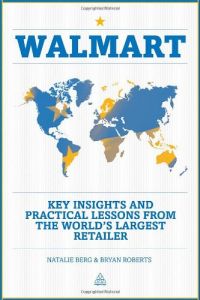Join getAbstract to access the summary!

Join getAbstract to access the summary!
Bryan Roberts and Natalie Berg
Walmart
Key Insights and Practical Lessons from the World's Largest Retailer
Kogan Page, 2012
What's inside?
How a little discount store in Bentonville, Arkansas, took over the world of retailing.
Recommendation
From its humble beginnings in 1962, Walmart climbed to the top of the retail pyramid, tallying annual sales of more than $400 billion as of its 50th anniversary in 2012. Walmart’s relentless pursuit of “Everyday Low Prices” saves shoppers billions, but is it the customers’ best friend or the giant that emptied Main Street storefronts? Is it the vendors’ top ally because of the volume it buys, or does it squeeze suppliers without relief in its quest to offer the lowest possible prices? Perhaps the answer is a bit of all of the above, according to retail analysts Natalie Berg and Bryan Roberts, who examine how Walmart has forever changed retailing, production and distribution methods, as well as consumer behavior. Today, the chain faces new challenges as the US market becomes saturated, consumer habits evolve and the international landscape changes. Though the authors’ prose can be a bit dense, getAbstract recommends this well-researched corporate biography to business historians, retailers, analysts and Walmart shoppers everywhere.
Summary
About the Authors
Natalie Berg is the research director at Planet Retail, a firm specializing in retail analysis. Bryan Roberts is a Walmart analyst and a director at Kantar Retail EMEA.


















Comment on this summary